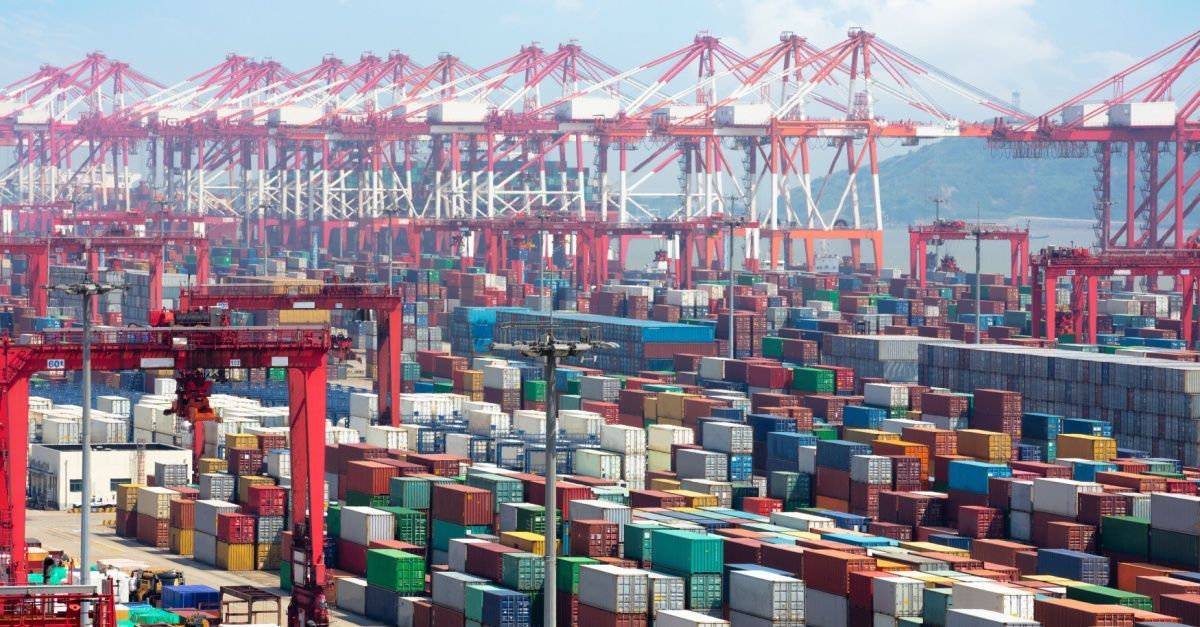Live Loading & Unloading vs. Drop Trailer Loads: Pros & Cons
Blog Post CTA
According to one DOT report, detention time costs truck drivers more than $1 billion per year. Shippers aren’t off the hook either. Driver wait time costs organizations $63.71 per hour on average, according to the same DOT report. The bottom line is that making truckers wait to load or unload a trailer is expensive.
Unfortunately, the reality at most facilities is that there will be some detention time. A warehouse could be down a few employees, or the yard might be busier than usual.
In addition, certain methods of loading and unloading a trailer take longer than others. The nature of live load trucking is that it will often take longer than drop trailer loading.
In this article, we’ll explain what each type of loading entails, and why shippers may want to consider one over the other.
What is a Live Load?
A live load is a type of shipment in which a driver waits while a shipment is unloaded. The trucker backs up to the warehouse doors, and then waits while warehouse workers load the contents of the trailer.
A similar concept is a live unload. This occurs when a driver drops off a shipment after hauling it from an origin point. Similar to live loading, the driver must wait at a warehouse while the truck is unloaded.
A commonality between live loads and live unloads is that in both situations, the driver spends time waiting at a facility. While it’s generally assumed that loading will begin immediately after the trucker arrives, this is not always the case. The timeframe for loading or unloading generally ranges from 30 minutes to a few hours. The amount of time spent at a facility depends on factors that are outside of the drivers control, like how busy the yard is, how many workers are on duty, and what the cargo is. Palletized shipments, for example, can be moved relatively quickly while other types of cargo can take a long time to load.
Yard mishaps and other delays can cause added stress for drivers. Truckers typically aren’t paid for the first two hours spent waiting to load or unload. In addition, delays can cause a driver
to be late to their next scheduled pickup.
What is a Drop Trailer Load?
An alternative to live loads is a drop load. Instead of waiting for the contents of a trailer to be loaded or unloaded, a driver
drops a trailer off at a warehouse and picks up a new one.
This type of loading is also called drop load, or drop and hook.
Drop trailer pick up times don’t have to be scheduled in advance. Once a trucker arrives at a facility, the freight has already been loaded into a trailer. All that’s left is for the driver to hook the trailer up to the truck and drive to the next location.
Dropping a load considerably reduces wait times versus live loads for the driver. There is no waiting for a trailer to be loaded or unloaded like there would be in live load trucking.
Another perk of drop loads is that they are often no touch. This means that the driver does not do any of the loading or unloading. While live loads can potentially be no touch as well, almost all drop trailer loads are no touch.
Overview of Live and Drop Trailer Loads
There are a few obvious differences between live loads or unloads, and drop and hook. The main one is that, with live loads (or live unloads), the same trailer is used at multiple stops. It gets emptied and refilled at each facility.
Drop trailers on the other hand, are pre-loaded. The entire trailer (not just the contents inside of it) is switched out at each stop on a haul.
Some truckers might look at these two loading options and assume that one is easier or more efficient. But that isn’t as clear cut as it may seem at first. Both live and drop trailer loads have pros and cons. We’ll outline some of the main advantages and drawbacks of each next.
Pros and Cons of Using Drop Trailer Loads
Most drivers would probably tell you that drop trailers are preferable versus live loads. Dropping a load won’t remove all of a driver’s woes on the road, but they do offer several benefits, both to truckers and to shippers. Below, we’ll list some of the advantages of drop trailer loads, and a few of their drawbacks.
Pros:
Efficiency - The biggest benefit of drop trailer loads is that they are usually efficient. The driver can show up at a facility, drop off a load, and immediately get back on the road with a new trailer. By not having to wait for hours at a facility, truckers can spend more time driving, which maximizes their earning potential.
Convenience - Not only is there less wasted time for drivers, but drop trailer loads make it easier for shipping yards to manage the schedule, and operate with less labor.
Flexibility - Unlike with live loads, drivers don’t have to keep as regimented a schedule. They can arrive, drop off a load, and hook up the new trailer without having to wait on a yard crew to load or unload the cargo. And if a driver is running late, they can still pick up a trailer without having to schedule a new appointment time.
Cons:
Misplaced trailers - If everything goes right with a drop trailer, truckers can get in and out of a facility quickly. But everything does not always go right. If a trailer is misplaced or mislabeled, it can take a long time to locate it. Other times, a trailer could be stuck behind other equipment and there won’t necessarily be anyone available to help.
Maintenance issues - A trailer could have a flat tire or misaligned wheels, and require maintenance before it can be hauled. Or it may be loaded above the 34,000 tandem axle weight limit, and the trucker won’t find out until he hits the first weigh station. At that point, he needs to turn around and return part of the load. Both of these can cause delays (and in the latter scenario, a potentially unhappy customer.)
Drop Trailers Can Become Live Loads - Most of the time in drop trailer shipping, a pre-loaded trailer is prepared and waiting to be picked up. But sometimes a trailer won’t be ready when a trucker arrives. When that happens, the driver will need to wait for a time slot to load a trailer.
Pros and Cons of Using Live Loading and Unloading
Pros:
Better equipment - Sooner or later, truckers who haul drop trailer loads will get stuck with a trailer that’s seen better days. Worn out trailers could have tires that lose air easily or electrical problems leading to faulty brake lights. Dealing with maintenance issues adds time and inconvenience to a haul. With live loads, truckers always use the same trailer which reduces the risk of unforeseen maintenance issues.
Less skill - Live loads have less of a learning curve than drop trailer loads. In drop and hook loading, drivers must learn to line up their fifth wheel plate with a trailer’s kingpin. Live loads, on the other hand, don’t require any additional skills outside of operating the truck.
More control - With live loads, truckers use the same trailer for an entire haul. This is especially important when it comes to weight limits. With live loads, truckers usually have more control over how much weight they carry, making it easier to avoid overloading a truck.
Cons:
Longer wait times - There’s a high probability of at least some driver detention in live loads. Drivers have to wait for a trailer to be loaded or unloaded, which can take a long time if a yard crew is especially busy or if there aren’t enough workers.
Rigid schedules - Truckers must schedule a live load or unload in advance. If the warehouse is running behind schedule, it could make a driver
late for their next appointment.
Lower pay - Most facilities won’t pay for the first two hours that a driver spends waiting to load or unload. This eats into their hours of service, reducing the number of miles they can legally cover each day. Long detention periods also make it harder to make it to future appointments on time.
Maximize Effectiveness and Profitability With Drop Trailer Loading
The trucking market may be stabilizing, but drivers are still under pressure to make their deliveries as efficiently as possible. Long detention times are one of the biggest sources of driver unhappiness. It can motivate truckers to seek new employment, in turn making life more difficult for their employers and for shippers alike.
Drop and hook can eliminate some of these woes. It is usually efficient and makes the most of a driver’s time. Shippers can reap the benefits of drop trailer loading, but in order to do so, they have to understand how the market works. To find out how drop and hook can improve your profitability,
contact Entourage Freight Solutions today.









